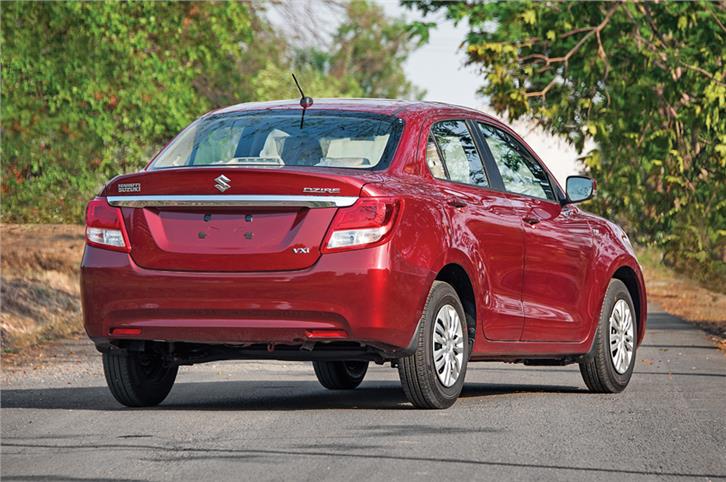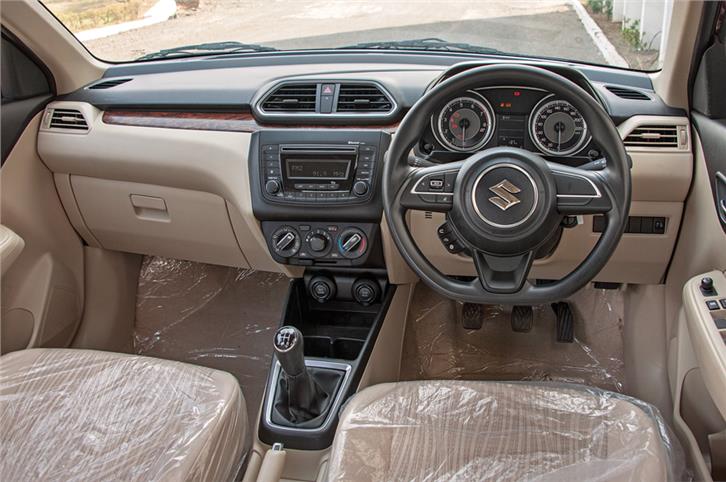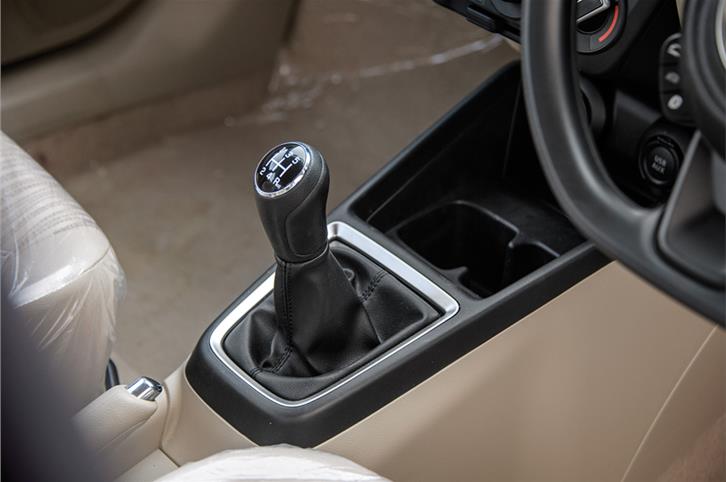2017 Maruti Suzuki Dzire review, test drive
Bigger, lighter and better, the new Dzire compact sedan is more grown up than before.
Published on May 25, 2017 10:07:00 AM
1,59,356 Views
Follow us on



What is it?
It’s incredible how the Swift Dzire has carved its own identity over the years, from being a sedan conversion of the popular Swift hatchback, to being an extremely competent sedan in its own right. No wonder it’s a household name now, so much so that for this third-gen car, Maruti has dropped ‘Swift’ from the Dzire’s moniker altogether. Maruti moves over 16,500 units of the Dzire each month, outselling all its competitors combined, making this the second bestselling car in the country.
The car you see here is all new and it has got the looks too. Sure, there’s little that Maruti could have done to increase its length if it still wanted to qualify for the tax benefits sub-four-metre cars enjoy, but this car looks a lot more proportionate than before; even the rear windscreen is steeper raked now, and the boot doesn’t look merely glued onto the hatch like the earlier iterations. The new body shell gets soft curves and flowing lines all over. The face looks smart and grown up, with almond-shaped headlamps, chunky chrome surrounding the grille with a Suzuki logo that appears to float, and L-shaped chrome inserts giving some definition to the bumper. The skinny, 165mm tyres and 14-inch wheels on the V and L variants look a bit small, though. The new LED tail-lamps look smart when lit up and there’s even a chrome strip connecting them. The rear stance, though, appears unusually raised.
What’s it like on the inside?
The insides of the car are as fresh as the exterior. The beige and black theme continues but the design is all new. Plastics are hard and quality isn’t too different from the outgoing car; in fact, several bits seem to be directly lifted from there. However, some bits feel really nice. The flat-bottom steering wheel, for example, looks and feels incredible; even the buttons on it are of high quality. The instrument console looks crisp and the needles at zero-degree position, like the Ignis, feel sporty. The new front seats are supportive and comfy, and the cushioning feels a bit softer than before. There’s ample height adjustment for the driver’s seat, and the steering gets tilt adjustment too. Ergonomics on the whole are agreeable, and there are a good amount of storage areas around as well. The audio system integration, however, feels like an after-thought and doesn’t gel well with the design. Also, the wood insert on the dashboard might pass of as being classy at first glance, but look closely and it feels a bit low grade. Then, there’s the inside mirror which is small and the large front neck restraints hinder visibility. The front passenger footwell eats into the legroom, resulting in a slightly off-centre seating position.
This new Dzire has a longer wheelbase of 2,450mm and, as a result, legroom has improved at the back. Two tall people can sit one behind another in reasonable comfort. However, headroom for taller occupants at the back is very tight. Despite being much wider than before and than the competition too, a third occupant at the back will be a tight squeeze. What’s nice is that there are air-con vents and a 12V power socket at the back now. The Dzire's boot has grown in size too, measuring a far more respectable 378 litres, and it is practically shaped too. The loading lip, though, is still a bit high.
What’s it like to drive?
The engines are the same as before. There’s an 83hp, 1.2-litre, four-cylinder petrol and a 75hp, 1.3-litre, four-cylinder diesel. Both these come with a five-speed manual and an automated manual transmission option. Maruti engineers have managed to make the engines a lot more efficient than before, claiming 22.0kpl for the petrol and 28.4kpl for the diesel, thanks in a big way to a much lighter kerb weight.
Like before, the petrol engine is really silent and refined on start-up. It’s barely audible at idling revs. However, get moving and it feels a bit different in character. From as low as 1,200rpm, the motor builds speed, with none of that earlier slight lethargy off the line. Power delivery is nice and smooth, and the revs build in a linear manner. It makes a sporty sound once it crosses 3,500 revs and there’s no reluctance from the engine. It’ll cleanly pull until 6,300rpm. Max torque of 113Nm is developed at 4,200revs. The five-speed manual transmission is a joy to use and the throws are short and very smooth. The clutch, though, feels a bit springy and tends to fight back with your left foot; even the travel is a bit long.
The petrol AMT is eager to shift up and the transition between gears is noticeable with a bit of head nod. It isn’t seamless like torque converters or continuously variable transmissions. There’s also the option to manually shift gears using the Tiptronic mode.
There’s little that’s different in the diesel though. Immediately off the line, there’s a noticeable delay before the power delivery kicks in. Once the revs build, boost is quite strong and the engine spins quite freely. However, it’s loud and clattery, and sounds crude at high revs.
Maruti has softened this car a bit and ride quality is noticeably better than the outgoing car. There are fewer body movements over bad sections of road and aren’t as jarring any more. It soaks up road imperfections in a very mature manner and feels nice and absorbent. The petrol’s steering is light and, with a tight 4.8m turning radius, it’s effortless to twirl around in the city. The return to centre is weak though, like many modern Marutis, and with all that lightness, it doesn’t feel as well connected to the road as before; there’s a bit of vagueness here. However, the diesel feels a bit heavier and more connected in comparison.
Should I buy one?
Maruti, as ever, has its fingers on the pulse of the Indian market, and this new Dzire is tailor-made to cater to the demands and needs of customers. It’s got all the right ingredients – space, practicality, comfort, good equipment on top variants, fuel-efficient engines and, above everything, the backing of Maruti’s extensive sales and support network. Also, the inclusion of ABS with EBD, and dual airbags as standard across the range is an excellent move that’s sure to go down well with increasingly safety-conscious Indians. With a wide introductory price range of Rs 5.45-9.41 lakh (ex-showroom, Delhi), there should be a Dzire variant for everyone. There’s little doubt then, despite the rise of the compact SUV, and doubts about the longevity of this segment in the light of the upcoming GST implementation, that Maruti seems to have another blockbuster on its hands.
Also read:
2017 Maruti Dzire price, variants explained
Tech Specs 
Copyright (c) Autocar India. All rights reserved.



 Price
Price Engine
Engine Transmission
Transmission Braking
Braking Efficiency
Efficiency Acceleration
Acceleration Max speeds in gear
Max speeds in gear Noise Level
Noise Level Body
Body Suspension
Suspension Steering
Steering Brakes
Brakes Dimensions
Dimensions
Comments
Member Login
Personal Details
No comments yet. Be the first to comment.